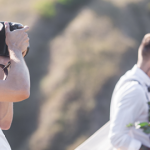
How to apply foundation? The secrets to write down to never forget them
The foundation is the basis of good make-up. Even that of the eyes. You can create the most dramatic smokey, but if the foundation is applied briefly, it will not be emphasized as it should. What does it mean to apply the foundation well? It means making it invisible, like a second skin, and at the same time knowing how to erase those little big imperfections that every skin – even the least problematic – has. In short, quite the opposite of the dreaded mask effect, comparable to a tangible layer that seems to rest on the face. When instead it has to merge with the skin. Where to start, therefore, to become an expert like a pro? Find out in the following lines.
How to apply foundation
First of all, a thorough daily cleansing is essential to ensure that the face becomes a (clean) canvas to receive the foundation. If the skin is impure or dehydrated, even the highest quality product will not show its effectiveness. An example? The matte foundation, which usually has a “pasty” texture, can become much softer if the skin is properly primed with a good moisturizer. Conversely, a fluid product with a watery texture can slide too much on oily-prone skin that has not been properly buffered with a mattifying primer.
After cleansing, massage a thin layer of moisturizer all over your face (avoiding the eyelids), let it absorb for 5 minutes, and then proceed with your makeup session. Pour two pumps of product on the back of your hand, then use a foundation brush to apply the product. It starts from the center of the face and continues fading outwards. Don’t worry about making it perfect yet – that part will come in a later step.
Where the foundation is applied
We start by spreading the product in small quantities on the 5 key points of the face, as if they were knobs, or on:
- Front
- Nose
- Chin
- Cheeks
The secrets for the “imperceptible” application
After applying the foundation quickly, the step of “refinement” takes over. Take a damp make-up sponge (the ideal is the beauty blender ) and pat gently, taking care to avoid streaking the product. To make sure it’s just moist, squeeze the excess water into a paper towel. The passage of the wet sponge is a secret to perfectly blending the foundation with the skin. Use the wider base all over your face, use the tip instead to blend foundation around your nose and eyes.
Then apply a concealer using your ring finger for extra coverage of pimples, acne scars, redness or blemishes. Wait a few moments for it to dry, then lightly tap the tip of the sponge on the concealer to blend it without smudging.
After the foundation, powder yes or no?
To prevent the foundation from melting by lunchtime, dust a translucent face powder on the T-zone, the area where all skin types shine first. Dip a maxi powder brush into the powder (but the compact powder is fine too, so dab the excess and roll it over your forehead, nose, and chin in soft concentric circles.
Can you use your fingers?
Can I use my fingers to apply a liquid foundation? Or is the brush mandatory? Surely the brush guarantees a more professional result, but the use of the fingers is not to be banished tout-court, especially if you are in a hurry.
So how to apply foundation with your fingers? «Let’s clarify immediately that it must be applied wisely: it is not like spreading a moisturizer, which requires a circular massage to let the active ingredients penetrate. On the contrary: the foundation is applied thinking of the concept of “spreading” a veil of paint on the face, rather than the concept of “kneading” a creamy compound ».
The fundamental steps
Imagine taking your nose as a point that widens: start from there by applying the foundation. Then slowly rise towards the forehead, spread towards the ears, and reach towards the neck.
The application that starts from the center of the face and continues towards the sides allows obtaining a natural effect that captures the light. «If you apply the foundation by massaging it like a cream, with a rotating movement, you risk putting too much product where it is not needed and too little where a greater quantity would be needed. The consequence is a not very homogeneous application that penalizes the final result. This is how we risk obtaining the classic mask effect ». Through the eventual massage, it is not possible to understand the quantity of product just applied, so at the end of the day, you may find your face stained, due to normal skin perspiration.
Other techniques to know
If you prefer the quicker method, you can apply the foundation with your fingers, even if it is not really “orthodox”. Applying the foundation with your fingers or a brush is like following a different ‘school of thought’: what matters is the technique, which must be adopted with skill. Whether it is fluid foundations or products with a creamier texture.
With the brush, the times are extended by a few seconds, but the application technique is basically the same, that is, starting from the center and spreading outwards and upwards. The difference between the two different application methods is that if you use your hands, it is good to warm the foundation between your fingers. If you use the brush, however, it is good to apply the product with small touches, pulling it slightly outwards.
You can reinforce the application with light brush strokes that fix the foundation, pressing lightly on the areas that require more coverage. For convenience, it is good to spread the amount equal to a small walnut on the back of the hand, which will be used as a palette from which to draw the foundation little by little.
The added value of the foundation brush
The brush allows a more homogeneous application than the fingers, since the bristles act as a precision tool , and prevent the foundation from being captured by expression lines and dilated pores.
Why does the brush give a professional touch? Because it helps smooth out the skin texture. However, there is no fixed rule that states that the brush is better: it is a matter of habit and experience. Some makeup artists claim that less product is consumed with the brush, but this is true if you know how to use it well.
The specific brush for foundation is the large one with a slightly rounded tip, with bristles arranged in a very dense way, just to allow a perfect application of the cream.





